Choosing trees to use less water
Written for the Davis Enterprise, January 26, 2012
Click on any image for a larger version
This month we continue our theme of reducing water use in the landscape. It is estimated that 80% of residential water use goes to yard watering.
Previous columns are here:
Choosing shrubs to use less water
Easy Steps to Reduced Water Use (focus on ground covers)
 Pistacia chinensis
Pistacia chinensis
Chinese pistache
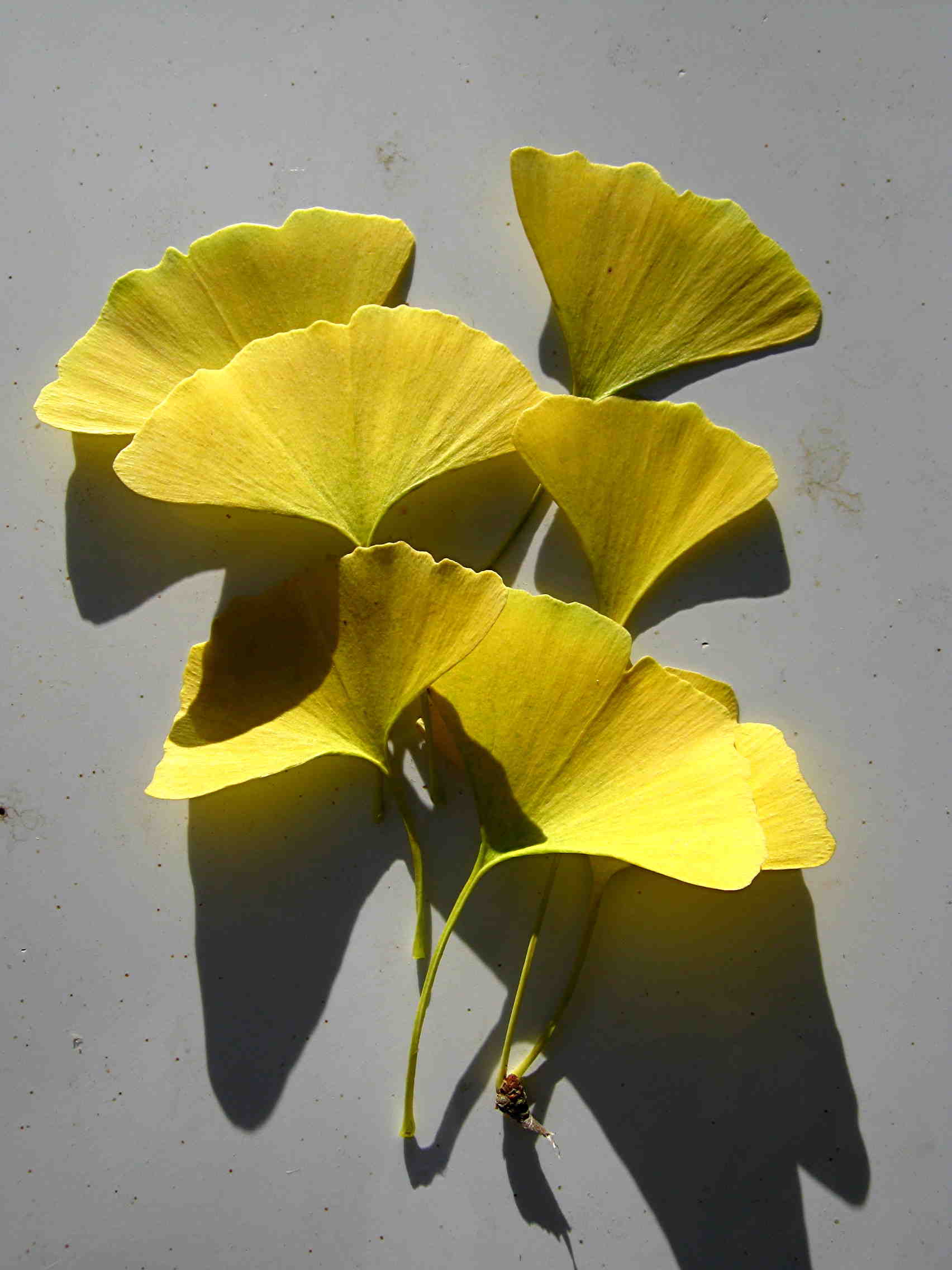 Ginkgo biloba 'Autumn Gold'
Ginkgo biloba 'Autumn Gold'
Ginkgo; Maidenhair tree
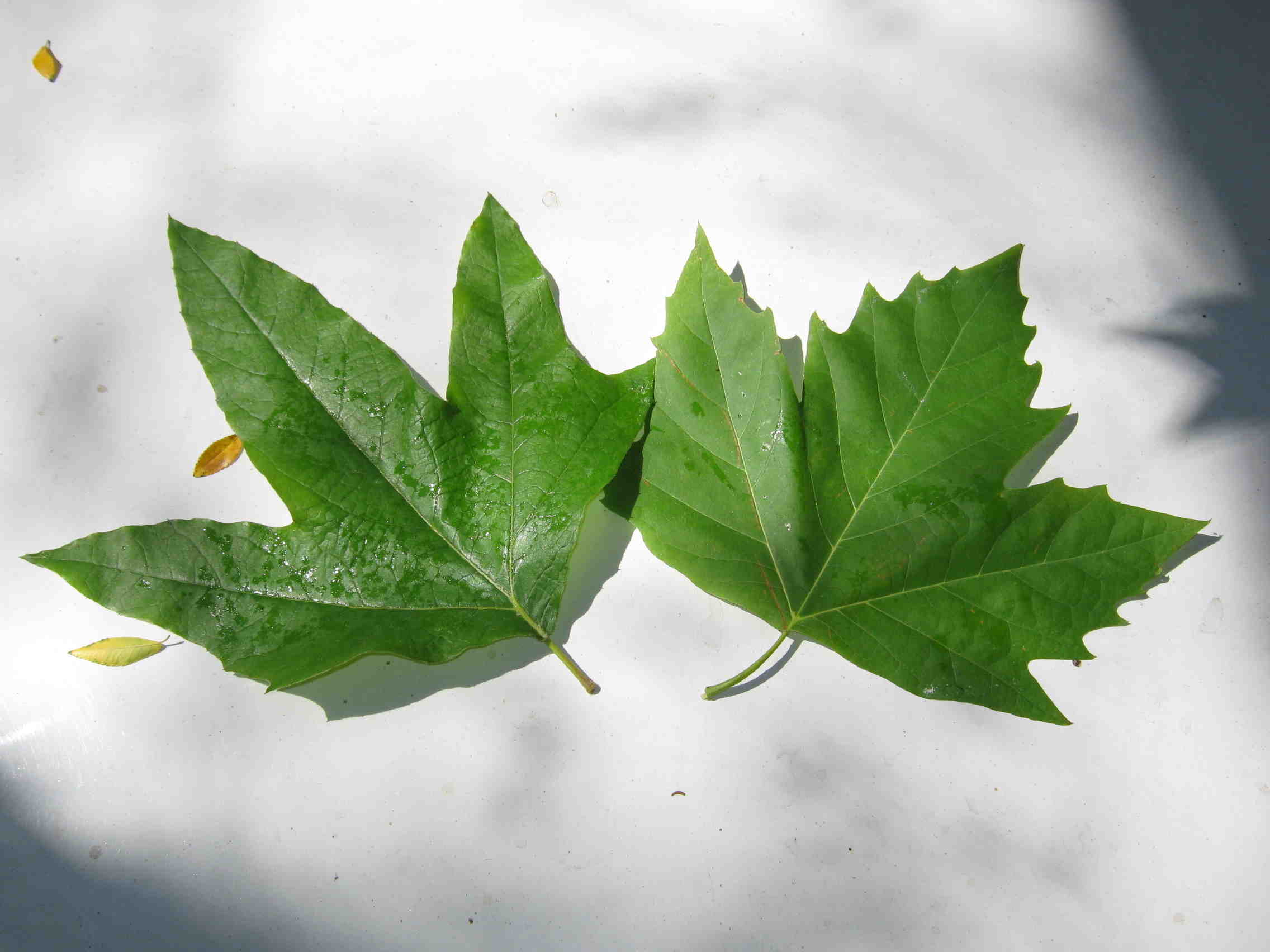 Platanus species
Platanus species
Plane trees & Sycamores
Three of our familiar shade trees: Ginkgo biloba, Pistacia chinensis, and (shown here) two types of sycamore. Growth rates on these are slow, medium, and fast, respectively. See the article text for important information about varieties.
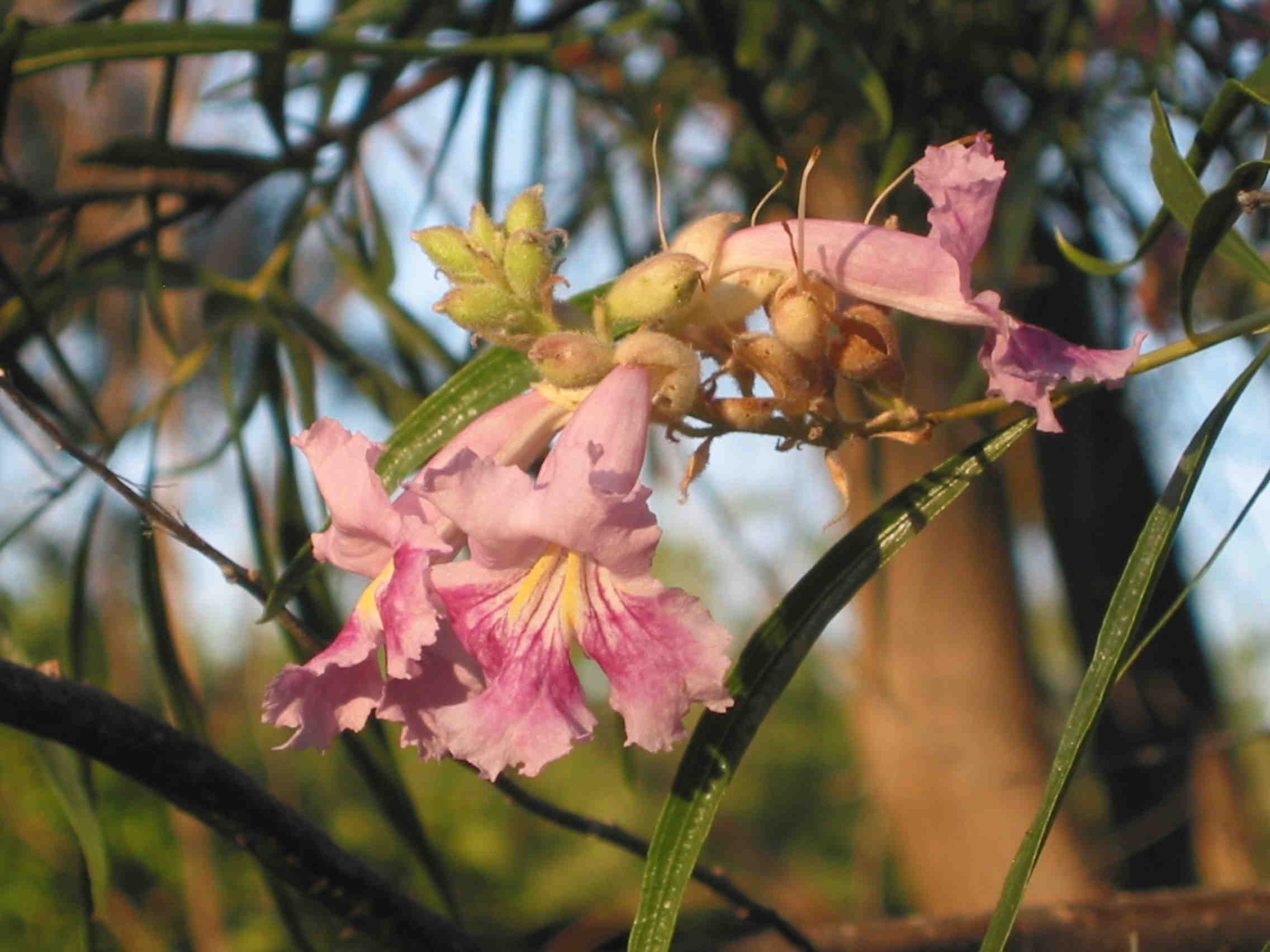 Chilopsis linearis
Chilopsis linearis
Desert willow
Desert willow isn't a willow, but the leaves are long and narrow so the common name fits. A well-mannered tree, very tolerant of drought, it has showy pink blossoms for a long period in the summer.
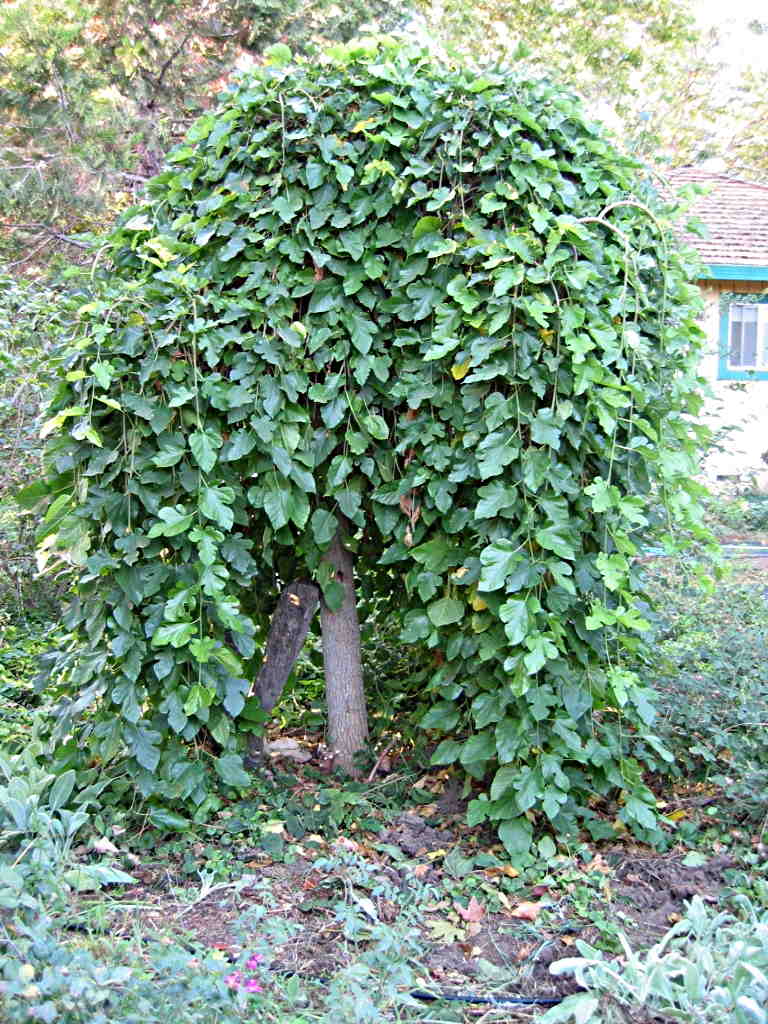 Morus alba 'Teas'
Morus alba 'Teas'
Weeping mulberry
Mulberries are notably tough, so the Fruitless mulberry (really just a male Morus alba) was widelyplanted in the 1960's. But it is huge, has aggressive roots, and the shade is so dense it is nearly impossible to garden under. This weeping variant makes a great garden accent. Shown here at about ten years.
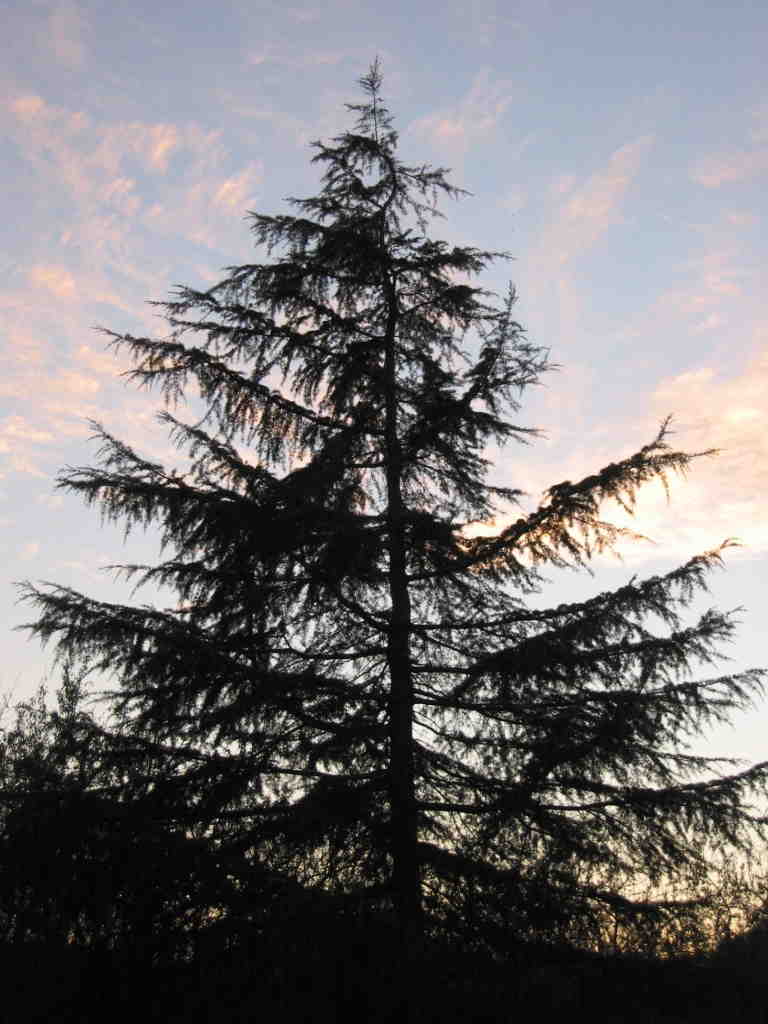 Cedrus deodara
Cedrus deodara
Deodar cedar
Deodar cedar is a very large tree! A great choice for big lots or rural properties. Consider Atlas cedar for smaller yards. Or Incense cedar.
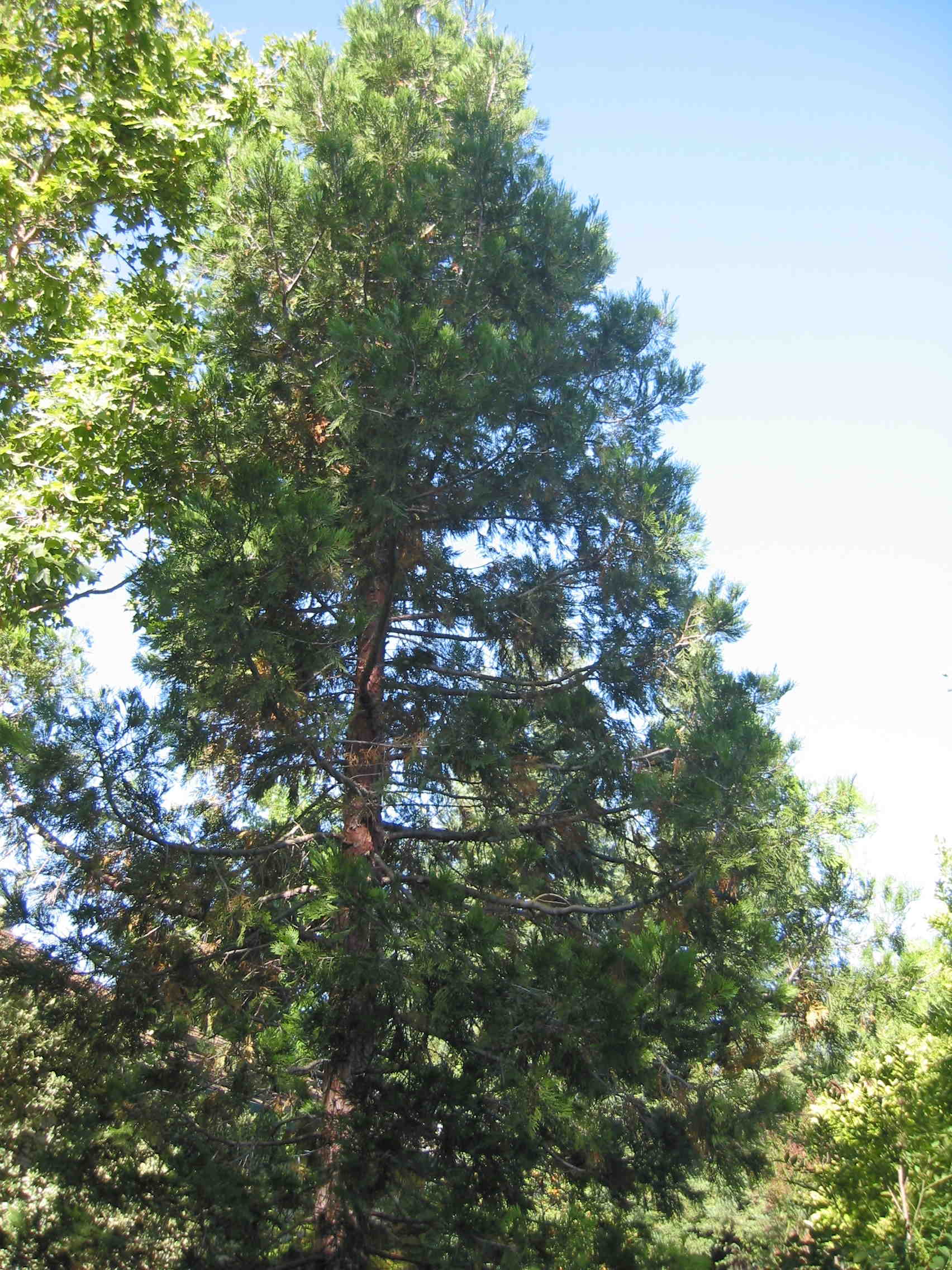 LIbocedrus decurrens
LIbocedrus decurrens
Incense cedar
Incense cedar is a steady grower at about two feet a year. Upright habit fits in small yards, even though the tree is eventually very tall. Much more drought tolerant than the popular coast redwood, it might be a good substitute in low-water landscapes.
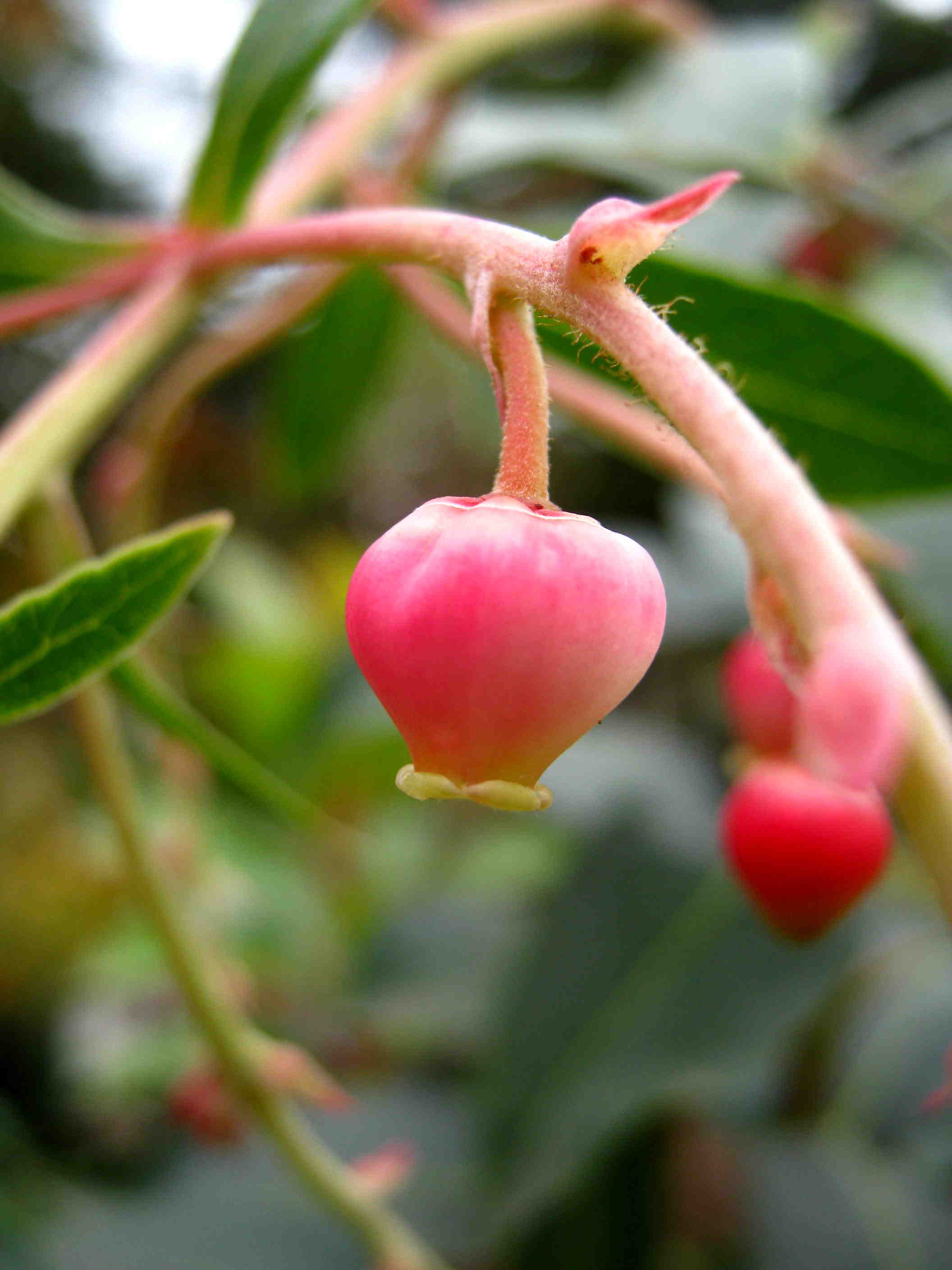 Arbutus 'Marina'
Arbutus 'Marina'
Strawberry tree has small urn-shaped flowers over a very long season, enough of them to be pretty, even in the winter. On the variety Marina, shown here, the flowers are followed by a small crop of showy orange fruit. Edible; bland to us, palatable to birds.
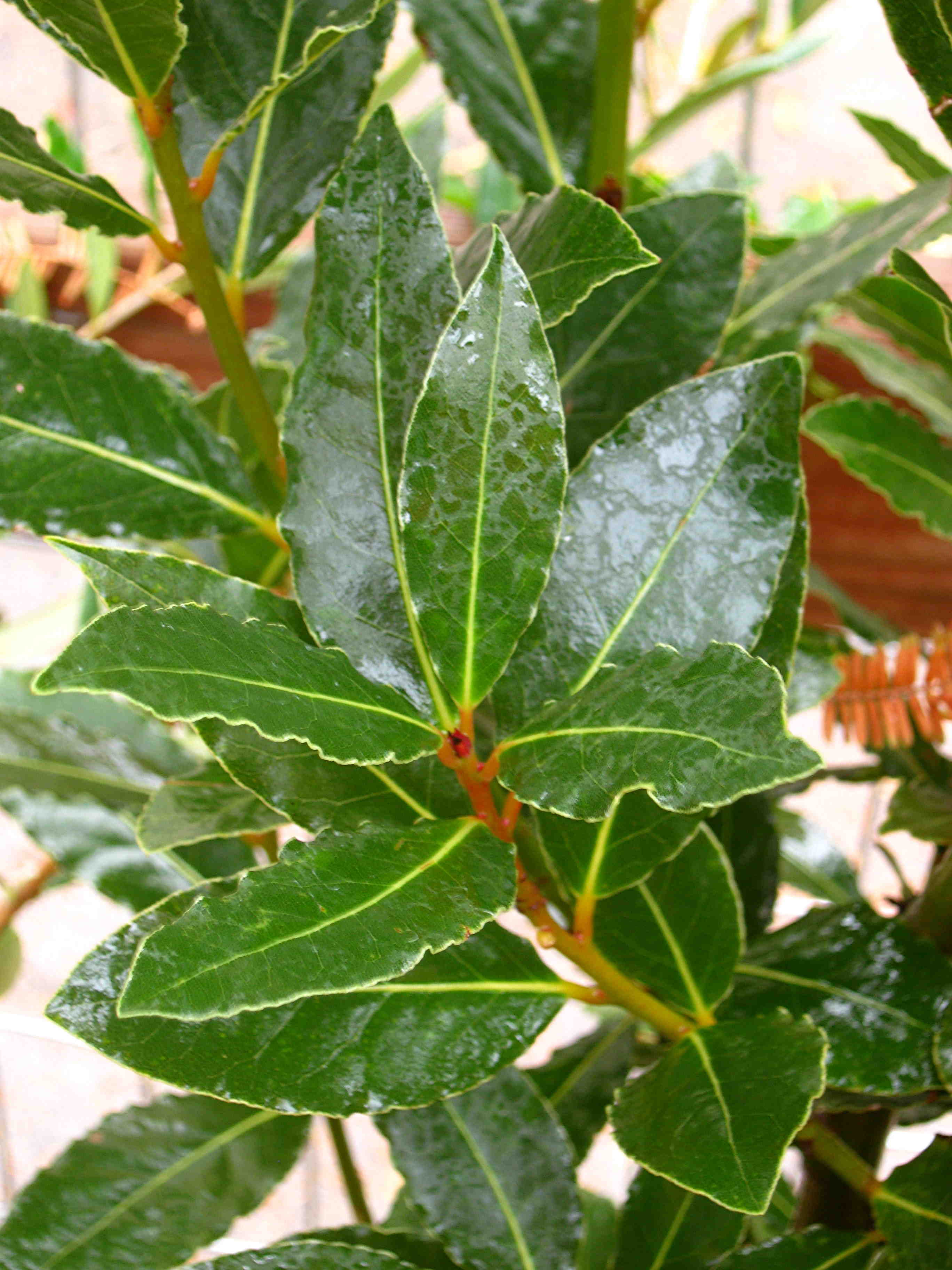 Laurus nobilis
Laurus nobilis
Bay laurel is a very large, upright evergreen tree with pungent leaves that are used in cooking.
 Xylosma congestum
Xylosma congestum
Shiny xylosma is one of the toughest, most useful evergreen shrubs around. Extremely tolerant of heat and drought, ok with some shade, it can be clipped as a hedge or even trained as a small tree. Variety Compacta is denser, has thorns.
Many years ago, when I studied landscape architecture, we had an assignment to take an existing landscape design and propose drought tolerant substitutions for the plants there.
This was the 1970's. Drought consciousness was high. Rainfall in 1976 was extremely low. Conservation was in force in Northern California. So UCD instructor Rob Thayer's take-home lesson: there was usually a lower-water alternative for a particular situation. For example, you can exchange an ornamental asparagus or a cycad for a fern.
You might think California native plants would be the first choices. But California has something like 15 ecotypes, ranging from desert to foggy coastal ecosystems. Should you choose Coast redwood (Sequoia sempervirens) for a native planting? Native does not necessarily mean drought tolerant! Coast redwoods look best with summer irrigation, even when mature.
Previous articles (October and November 2011) have focused on ground covers and shrubs. Here are some trees that can grow with very little water once established. Some I have seen with no summer irrigation once established.
Note: 'once established' means that you DO need to water new trees every few days through at least their first summer. Water thoroughly, and make sure the surrounding soil gets a good soaking. Check that your system distributes water over the whole root system, or water by hand.
Should you avoid higher-water trees entirely? No, you should plant them where you will be watering more. Put plants in appropriate irrigation zones. Japanese maples are beautiful in a small shade garden with other higher-water plants. Birches are fine with the watering you give your lawn. Just don't plant high-water trees in low-water landscapes, or vice versa!
Large deciduous trees
Chinese pistache
Pistacia chinensis
Beautiful fall color! Grows three to four feet a year, with lush green foliage. Drought-tolerant, but also takes lawn watering. Female trees have showy berries (which attract birds); some people object to the litter.
Varieties: selected male form Keith Davey has no fruit, and has reliable red fall color.
Ginkgo, Maidenhair tree
Ginkgo biloba
One of our most trouble-free landscape trees. Grows slowly, about 18 inches a year, with nice pyramidal form. Beautiful gold fall color; no pests or diseases. Tolerant of drought or watering. Plant male trees only!
Varieties: Autumn Gold, Saratoga are male trees with uniform growth habit.
Plane trees & sycamores
Platanus hybrids
Very fast-growing, very large shade trees, well represented in Central Park. Big leaves, attractive bark. High, open canopy is easy to garden under.
Varieties: disease resistance is important. Roberts is an anthracnose-resistant variety of our California native sycamore; Bloodgood and Columbia are resistant varieties of the European species.
Valley oak
Quercus lobata
Also called California White oak. Our big native oak. Grows three feet per year, initially upright, eventually massively spreading. Very tolerant of drought, heat, wind. Young trees can be irrigated; don't water mature trees. Oak galls are a curiosity but harmless; some do litter.
Sawleaf zelkova
Zelkova serrata
Fast grower at five feet or more per year. Spreading habit, nice fall color (rusty red). Good examples on Elmwood Drive (zelkova is in the elm family).
Varieties: Village Green is a selection with broader habit and nice fall color.
Small to medium deciduous trees
Chaste tree
Vitex agnus-castus
Light blue flowers over a long summer season; white form also available. Fast-growing large shrub or small multi-trunk tree with light green palmate leaves. Tolerates heat, drought; will grow in partial shade.
Crapemyrtle
Lagerstroemia indica x faueri hybrids
Very popular trees that I include because they are often planted in low-water landscapes. They bloom best if they are not drought-stressed, but they can tolerate low water once established. A deep soaking every couple of weeks may be sufficient. Severe drought can cause the new growth to stop before buds develop.
Desert Willow
Chilopsis linearis
Soft pink, trumpet-shaped flowers that attract hummingbirds all summer. Grows about three feet a year to twenty-five feet or so. Upright habit, narrow willow-like leaves. Prefers drought. (Not a willow at all; it's in the trumpet vine family!).
Varieties: Bubba has larger, bicolor flowers. Burgundy has darker purplish flowers.
Mulberry, weeping
Morus alba varieties
Mulberries are very drought tolerant, including the well-known Fruitless mulberry shade tree. I consider that too large for most yards. But the miniature weeping varieties make attractive focal points in the garden, with a mound of cascading branches, large lustrous leaves (suitable for your silkworm projects). Fruit or not, your choice.
Varieties: Chaparral is fruitless, Teas has abundant sweet fruit that attracts birds (and stains fingers and clothes!). Tolerant of drought or watering.
Purple Smoke tree
Cotinus coggygria purpureus
Purple leaves and purple flowers make a striking contrast with grey or glossy-leaved plants. Very heat tolerant. Prefers drought; gets iron chlorosis if irrigated heavily.
Evergreen trees
Cedars
Atlas cedar
Cedrus atlantica Glauca
Bluish-green needles. Grows two to three feet a year with unusual angular growth habit. Striking skyline tree. Many nice specimens in Stonegate in West Davis. Deep-rooted and tolerant of heat, drought, wind.
Deodar cedar
Cedrus deodara
Fast growing tree, up to five feet a year. Very upright when young, then spreads widely at the base. Soft, feathery texture with bright green needles. Eventually very large, probably too big for most yards. Very tolerant of heat, drought, wind.
Incense cedar
Calocedrus decurrens
Also sold as Libocedrus. Western native. Grows 2 feet a year, eventually very large. Tolerant of heat, sun, shade, poor soil. Grows as narrow column for first 10 years or so, then slowly spreads. Good substitute for Coast redwood in dry landscapes.
Grecian or Mediterranean Bay laurel
Laurus nobilis
The bay leaf used in cooking. Very versatile garden plant. Large shrub, eventually growing to 30'+, but very upright habit and ease of pruning make it manageable. Will grow in total shade, or in full sun. Tolerant of drought or watering. Very easy to keep in a pot for years. The native California bay (Umbellularia californica) grows much more slowly and is very uncommon in the nursery trade.
Oaks, Live
"Live oak" is the term used for evergreen oaks. Drawbacks include heavy leaf drop in spring, and some have a heavy network of fine surface roots, so they can be hard to garden under.
Coast Live oak
Quercus agrifolia
One of our native live oaks. Grows two to three feet per year, with dense, hollylike foliage and a round habit. Kind of scruffy when young, they take a few years to start showing potential. Attractive dark gray bark.
Cork oak
Quercus suber
Widely planted in Davis many years ago, so there are some venerable specimens around town. Grows about three feet per year, with equal spread. Small leaves are dark green, gray beneath. Corky bark is very attractive. Very drought tolerant and doesn't like lawn watering. Good examples west of the Rec Hall, and south of Hibbert Lumber's parking lot.
Pines
The following species are tolerant of drought and moderately tolerant of being watered.
Black pines include Austrian black pine (Pinus nigra) and Japanese black pine (Pinus thunbergiana). Both are very tolerant of drought and moderately tolerant of watering. Grow two to three feet a year with classic pyramidal shape, but are often pruned asymmetrically for interest.
Canary Island pine (Pinus canariensis) is the very tall, narrow pine with droopy needles you see along Covell Blvd.
Scotch pine (Pinus sylvestris) has denser growth habit, classic Christmas tree form.
Shiny xylosma
Xylosma congestum
This tough shrub can grow to become a small tree over time. Extremely tolerant of heat, drought, and ok with shade, too.
Strawberry Tree
Arbutus species and hybrids
Shiny leaves, showy flowers and fruit, beautiful bark like madrone (which is related but very fussy). Tolerate heat and drought, also tolerate watering.
A. unedo has heavy crops of fruit that may be annoying. Arbutus Marina has lighter crops of fruit, larger leaves.
Wild Lilac
Ceanothus species
Tree forms of this genus grow to ten to fifteen feet tall (or more) and broad. Attractive, large shiny leaves. Pretty, fragrant medium-blue flowers in large clusters in spring. Does not want summer watering once established.
Accent trees
Italian cypress
Cupressus sempervirens 'Glauca'
The narrow spire that we associate with Tuscany and cemeteries is a very, very drought tolerant tree. Great roosting habitat for raptors.
Olives
Olea europea
These hail from regions without summer rainfall, and thrive with very limited irrigation. Fruit or not, your choice; if you choose a fruiting variety, be aware that you will have a LOT of olives.
Palms
California and Mexican fan palms (Washingtonia spp.) are the very tall ones in our area. These can live without summer irrigation. Canary island date palm (Phoenix canariensis) is the robust species, twenty feet across, that you see around old farmhouses. There are many other species of drought-tolerant palms hardy in our area.
Fruit Trees
Most fruit trees prefer deep, fairly infrequent soakings, so they may be suitable for low water landcapes. A few can tolerate considerable or total drought once established:
Citrus (Citrus x)
Figs (Ficus carica)
Jujube (Ziziphus jojoba)
Persimmons (Diospyros kaki)
Pineapple guava (Feijoa sellowiana)
Pomegranate (Punica granatum)
Quince (Cydonia oblonga)
Here are some lists of drought-tolerant plants
© 2011 Don Shor, Redwood Barn Nursery, Inc., 1607 Fifth Street, Davis, Ca 95616
www.redwoodbarn.com
Feel free to copy and distribute this article with attribution to this author.
Click here for Don's other Davis Enterprise articles
